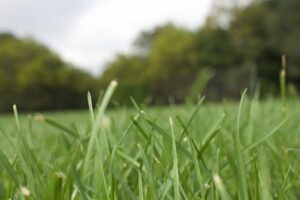Spring time is growing season for your lawn. Whether it’s a cool season grass or a warm season grass that makes up your turf, it’s going to need regular mowing during the spring months.
As well as keeping your yard looking amazing and the envy of your neighbours, proper mowing techniques are essential for maintaining a healthy lawn. With these mowing tips for spring you can make sure that you’re looking after your lawn like a pro.
Never mow with dull blades
Sharpening your mower blades is a critical part of pre-spring yard preparation. Mowing lawn with dull lawn mower blades not only looks bad, but it causes stress on your lawn. Dull blades leave torn tips at the end of the blades of grass which turn brown and look unsightly. On top of that, the grass becomes stressed from trying to repair these damaged tips. Do your lawn a favour and sharpen up your mower blades before spring
Pick up any debris from the lawn
This goes hand-in-hand with the first point. Sticks, leaves, and other debris on your lawn cause problems. Firstly, running over them with your mower damages the mower blades, and we all know how much of a problem that is! Secondly, they block precious sunlight to the grass they’re covering, denying your lawn the maximum opportunity to photosynthesise.
Don’t mow lower on the first mow of the season, despite old wisdom
There’s a lot of debate around the idea that for the first mow of spring you should mow your grass low. This is risky, as you can potentially scalp your lawn, or increase the chances of weed invasion because of less shoot density. The extra-low-first-mow is usually used as a dethatching technique for warm season grasses like buffalo, zoysia, couch, or kikuyu. Instead of risking scalping or weeds, use a dethatching machine. If you’re going to do it to any type of lawn, buffalo is most likely to benefit. Steer clear of this technique for any other lawn variety – it’s just too risky.
Use the ‘One Third Rule’
Any lawn care expert will tell you that you should never mow more than one third of the blade length off the grass at any one time. Mowing shorter than that will cause undue stress on your lawn. The height that you set your mower will depend on the grass variety and how long you like your turf to be. Warm season grasses tend to be kept shorter, at between 2 and 4 centimetres, where cool season grasses tend to be kept between 5 and 10 centimetres, depending on the variety.
Your mowing schedule should be frequent and regular so that you can keep your turf at the desired height without taking off more than one third of the blade length. Remember, longer blades lead to deeper roots, which is better for drought resistance.
The catcher: should you use it or not?
Letting lawn clippings fall on the ground is a great, simple way to fertilise your lawn. There are instances, however, when it’s not a good idea. If your lawn is suffering a weed infestation, it’s best to put the catcher on the mower so that the clippings don’t fall back onto the ground – those clippings are full of weed seeds and are only going to compound the problem.
Alternate your mowing direction
When you change up your mowing direction you push the blades of grass the opposite way to how they were previously laying. This allows blades access to sunlight that they wouldn’t otherwise get. Alternating direction each time you mow leads to a healthier, well-rounded lawn.
Adjust your technique for shady areas
If there’s a section of your yard which is mostly or entirely shaded, your mowing schedule for this area should be adjusted accordingly. Raise your mower height slightly – the increased grass height will allow the grass more opportunity to absorb those rarer rays of sun. The rate that the grass grows in that area will probably be a bit slower than that of the grass in full sun, so reduce the frequency that you mow, too.



